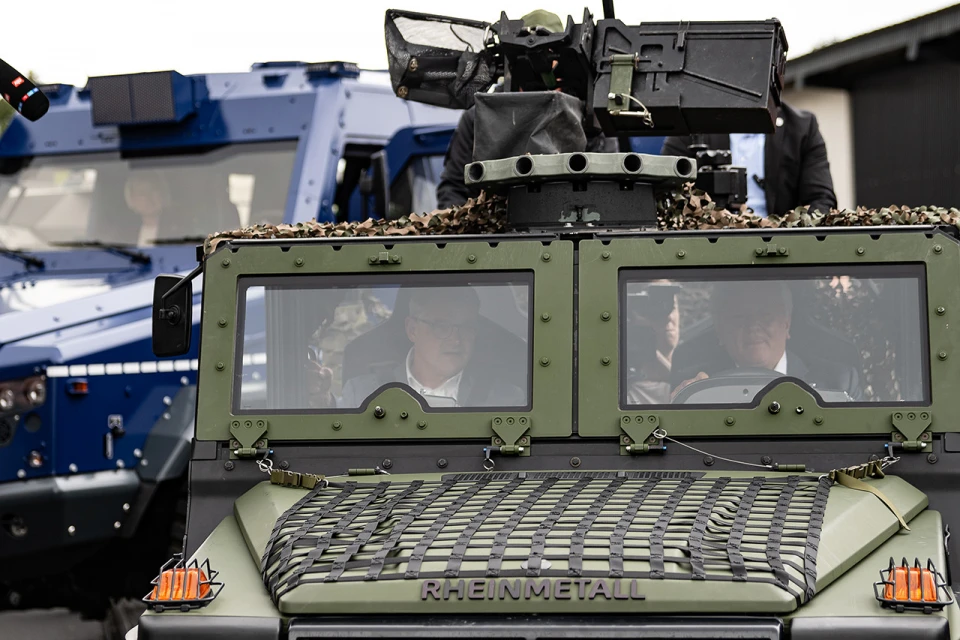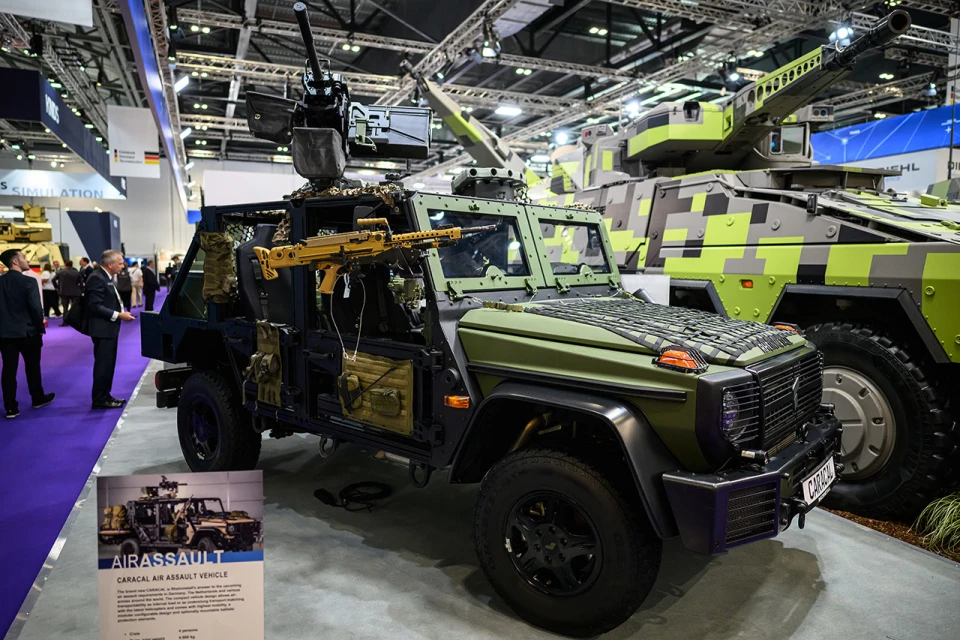
Ukraine debuts Caracal, cutting-edge German armored vehicles: technical characteristics and advantages
Ukrainians have grown accustomed to reports about allies transferring surplus weapons, which are no longer needed, to Ukraine. Nevertheless, there are instances where the Ukrainian military takes the lead in adopting cutting-edge technologies from the European defense industry. One such example is the use of Caracal military off-road vehicles
Espreso talks about the German vehicles that will be transferred to Ukraine, how they will be used at the front, the capabilities of the armored vehicles and their characteristics.
The article covers the following topics:
- What are Caracal and when will Ukraine receive them?
- Features of Caracal vehicles
- Main technical characteristics of Caracal
- Who, besides Ukraine, will deploy Caracal?
What are Caracal and when will Ukraine receive them?
In November, the press service of the German concern Rheinmetall announced the delivery of five Caracal armored vehicles to Ukraine. The manufacturers emphasized that the tactical vehicles would arrive in Ukraine by the end of 2023 or early 2024. Official reports in October highlighted an unspecified vehicle shipment as part of aid from Germany for the Special Operations Forces. The Militarnyi portal speculated that these vehicles could likely be the Caracal models.

Photo: Getty Images
The Caracal is a tactical vehicle derived from the civilian Mercedes-Benz G-Class SUV. Originally designed for airborne units, it boasts the capability to be transported within the internal cargo compartments or externally suspended from CH-47F Chinook and CH-53K King Stallion helicopters.
In its official release, Rheinmetall positions the Caracal as its "response to future demands for on-board vehicles worldwide." The manufacturer highlights its compact design and adaptability for air transportation as key advantages. This 4x4 off-road vehicle is primarily crafted for air and special operations.
"It is characterized by speed, low level of noise, scalable defense, and a variety of weapon options that provide a high level of mobility and dominance," Rheinmetall writes.
The tender process, initiated in October 2022, concluded with Rheinmetall securing the bid by presenting the most advantageous combination of price and technology. The debut of the vehicles occurred at the DSEI arms exhibition in London in 2023. Collaboratively developed by Rheinmetall, Mercedes-Benz (chassis), and Armed Car Systems (modular bodies), this year's development has not undergone battlefield testing yet. The Ukrainian Armed Forces are slated to be the first to deploy and evaluate this cutting-edge development, marking Ukraine as the pioneering country worldwide to utilize this latest advancement.
Features of Caracal tactical vehicles
The armored vehicle is designed on a modular basis. This means that its design can be changed and combined, depending on the type of task to be performed. Thus, the Caracal can be equipped with a variety of weapons, from machine guns to ATGMs or small-caliber guns. It is also possible to install additional ballistic protection elements.

Photo: Getty Images
"Its unique modular design allows the Caracal to be used in airborne operations for a variety of purposes, from simple troop transport to medical, combat engineering or other logistics missions," the manufacturer's description says.
The Caracal is equipped with a six-cylinder diesel engine with a power of 183 kW (249 hp), which can accelerate the vehicle to 140 km/h. The Soldat&Technik portal calls the Caracal one of the most compact platforms in its class. The combination with 4x4 all-wheel drive gives the Caracals high off-road capability - they are capable of 60 percent gradients, overcoming obstacles 33 cm high and trenches half a meter deep.
Another useful feature of the Caracals is the ROSY defense system, a special development of Rheinmetall. Caracal armored vehicles can instantly deploy a multispectral smoke screen to avoid enemy attacks with weapons that require direct aiming (small arms, weapons with optical sights, RPGs or laser-guided weapons systems).
ROSY's vehicle mounting system allows for easy and quick installation of the grenade launcher unit, and they can be mounted on top of each other in any number of ways. The system is installed only when it is necessary to perform the task (this can be done with the help of an adapter, with one click), so as not to overload the machine in other cases. The system is effective in the visible, laser, and infrared ranges.
ROSY granites are 40 mm in caliber and are fired up to 32 meters from the machine, creating a smoke screen of 90 square meters. The smoke screen can be initiated in half a second. The system can also launch stun grenades or chlorobenzalmalononitrile grenades to disperse people near the vehicle (non-lethal weapons).
Given the features and functionality of the vehicle, the Militarny portal assumes that Caracal will be used by the Special Operations Forces or special purpose units of the Defence Intelligence of Ukraine.
Main technical characteristics of the Caracal
- Length: 4.7 meters
- Width: 1.8 meters
- Height: 1.85 meters
- Weight: 4,900 kilograms
- Payload: 2,000 kilograms
- Engine Power: 249 horsepower
- Speed: Up to 140 km/h
- Price: Approximately EUR 600,000.
Who, besides Ukraine, will deploy Caracal?
In June 2023, Rheinmetall announced a major contract for the supply of Caracals to the armed forces of Germany and the Netherlands, which was previously approved by the parliaments of the countries. The manufacturers are set to receive a total of EUR 1.9 billion, amounting to approximately EUR 621,000 per SUV. As part of the agreement, Rheinmetall has committed to providing lifecycle support for 20 years. The contract encompasses various vehicle configurations, including those designed for passenger transport, group deployment, material transportation, as well as specialized Caracal medical vehicles.
The "framework contract" encompasses over 3,000 tactical vehicles, with a confirmed order for 1,508 vehicles valued at EUR 870 million (approximately EUR 577,000 each). According to reports from the Dutch Defense Ministry, 504 of these vehicles are allocated to the Dutch military. The Netherlands has committed to a payment of EUR 302.5 million, equating to EUR 600,000 per unit for the acquisition of these half-thousand Caracals. The delivery plan spans over five years, with the Netherlands set to receive a hundred vehicles annually.
Germany and the Netherlands are jointly acquiring identical weapons systems through a shared contract, a reflection of the ongoing integration of their rapid response forces since 2014. Notably, Germany is financing this collaborative project through a dedicated fund established in 2022 for the Bundeswehr's re-equipment. The delivery of the initial prototypes is slated for the first quarter of 2024, with serial production set to commence in early 2025.
- News











































